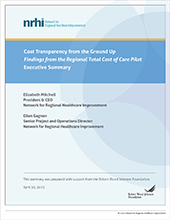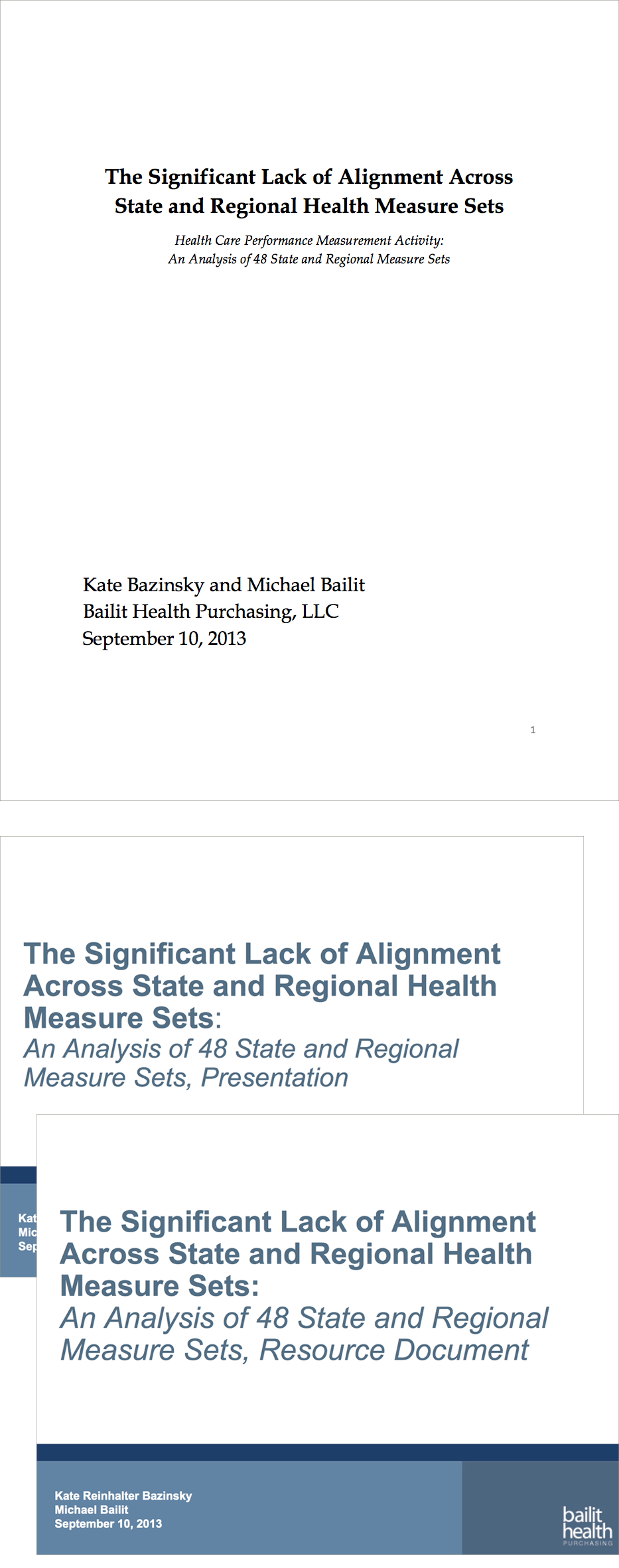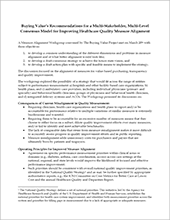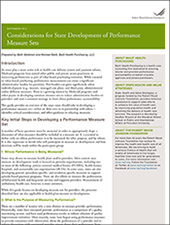
Buying Value Benchmark Repository
Watch a webinar on the 2018 webinar that provides an overview of the Buying Value Benchmark Repository and discusses how states can both utilize the Repository and contribute measures to it. The Webinar can be accessed on the State Health and Value Strategies website.
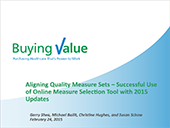
Online Measure Selection Tool Orientation
Watch a webinar on the 2016 update of the Buying Value Measure Selection Tool, featuring an overview of the recent updates to the Tool, an online orientation on how to use the Tool, and an example of a state’s experience with the Tool. The Webinar can be accessed on the State Health and Value Strategies website.
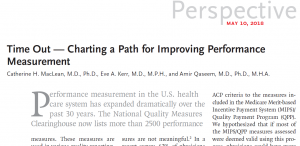
Perspective: Time Out – Charting a Path for Improving Performance Measurement
On April 18, 2018, three physicians analyzed the 271 measures in the Centers for Medicare and Medicaid Services’ Merit-based Incentive Payment System (MIPS) measure set against a set of criteria developed by the American College of Physicians. In the article, the physicians outlined the shortcomings of several MIPS measures and the process used by the National Quality Forum to endorse measures as well as. The article can be accessed on The New England Journal of Medicine website.
Total Cost of Care Pilot Project
Getting better care at lower costs requires strong, reliable measures of both quality and costs. A recent pilot project of a proven comprehensive cost measure, Total Cost of Care (developed by Minnesota Community Measurement), showed that comparable date on cost could be collected and reported in five different states. The Network of Regional Healthcare Initiatives, which organized the pilot, describes the results in this report.
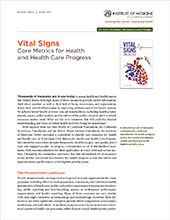
IOM Report Vital Signs
On April 28, 2015, the Institute of Medicine (IOM) released a long-awaited report titled “Vital Signs: Core Metrics for Health and Health Progress.” The report was written to address the question “What are the core measures that will yield the clearest understanding and focus on better health and well-being for Americans?”
Research: Alignment of Existing Measure Sets
In September, 2013 Buying Value commissioned a study of state and regional measure sets that was released. While the study found a preference for standardized measures among state agencies and regional initiatives, it also found shockingly poor alignment among the measures in use.
Highlights of the research include that:
-
- Only 20 percent of the measures appeared in more than one of the 48 measure sets analyzed;
- Approximately 25 percent of even the shared measures were modified in some way, compounding the lack of comparability;
- Further aggravating the problem, states/regions frequently used non-standardized, “homegrown” measures, which made up 39 percent of the 509 distinct measures in the 48 measure sets.
The research resulted in three reports, which are available here:
- An issue brief summarizing the findings.
- A Powerpoint presentation of the study’s highlights (31 slides, plus appendices).
- The full analysis, presented in a 180 slide powerpoint.
Recommendations for a Multi-Stakeholder, Multi-Level Consensus Model for Improving Health Care Quality Measure Alignment
A Measure Alignment Workgroup convened by The Buying Value Project met in March 2014 and developed recommendations and a consensus model for the creation of core measure sets.
Considerations for State Development of Performance Measure Sets
This guide provides an overview of the steps states should take in developing a performance measure set—either on their own or in partnership with others—identifies critical considerations, and offers guidance in selecting measures.

